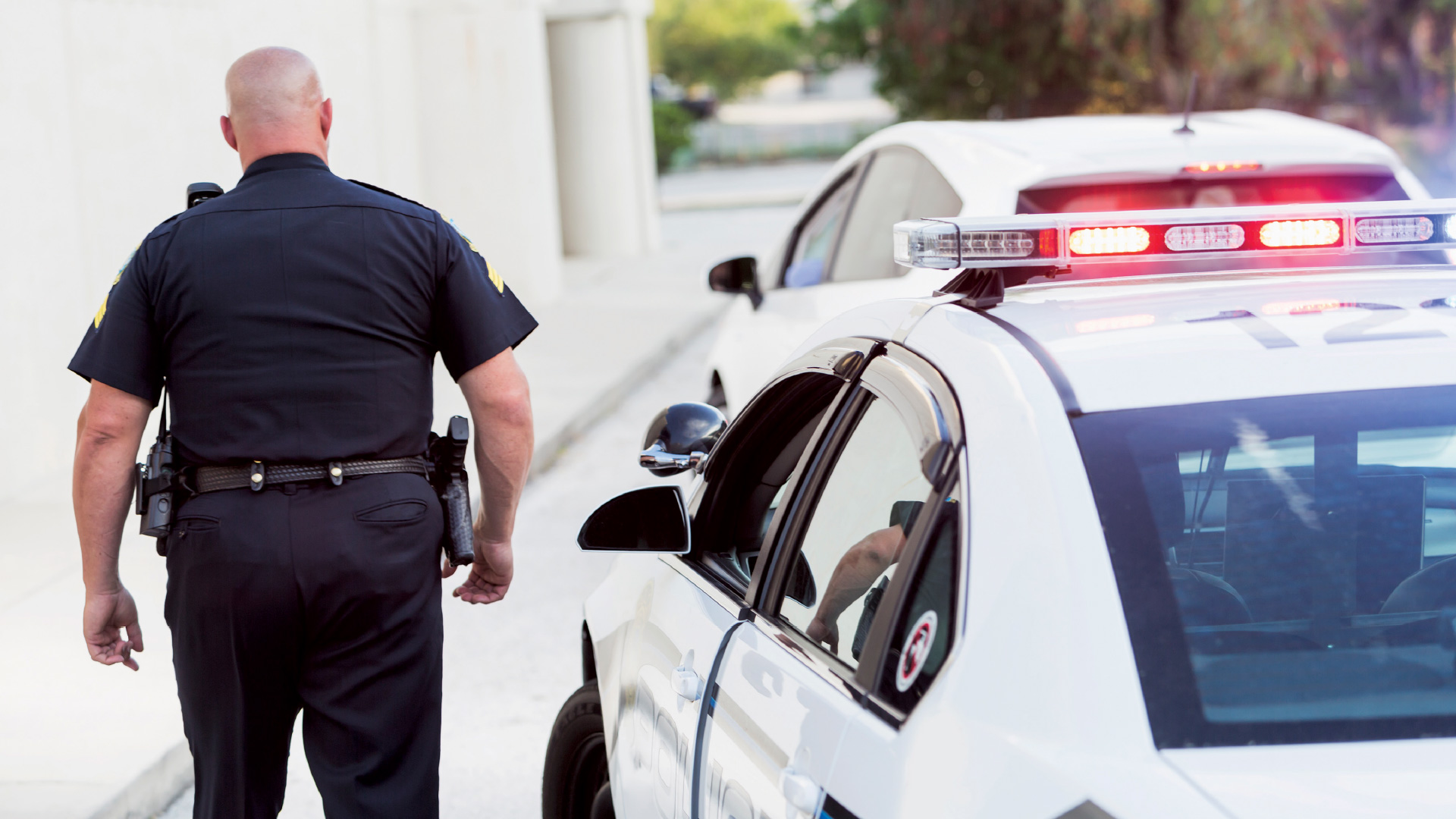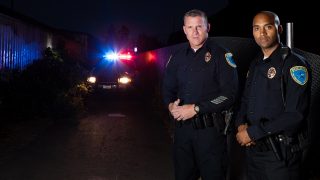
In Brazilian jiu-jitsu, we are taught a core principle early in our training that we build upon throughout our whole experience: “position before submission.” This means you should attempt to solidify a dominant position before attempting to make your opponent submit. Dominant position also lessens attacks and potential damage the opponent can inflict, giving the person achieving this position time and options to stay safe if their particular attack doesn’t work.
Dominant positioning is so important that I teach my students position before anything else — a takedown, reversal, escape or submission. The fight is a battle for proper position. If we can immediately fix bad positions and then establish dominant ones, the fight becomes a battle of position and strategy, not just a physical contest that we may not be able to win. Dominant positioning gives us options, time, the ability to move, distance management, leverage and angles; it covers up physical deficits and creates a greater mathematical chance of victory. Position stacks the deck in our favor and leads to favorable outcomes for us.
The position principle in law enforcement
This principle can be applied directly to the law enforcement world and use of force. In law enforcement, the preferred outcome is control and then custody. I am going to address a particular use-of-force event where the principle of position can greatly influence the outcome: an officer dealing with a suspect who is in a car and still in control of the car.
Proper positioning in this situation is strength. Proper position makes the weak strong, strong stronger and strongest dominant. In this scenario, the car weighs over 2,500 pounds, is physically strong with a hardened shell and is much faster in a straight line than the officer. The front of the car may emit light that can blind or inhibit vision, and the vehicle is more effective moving forward as a weapon.
Good positioning leads to good outcomes. Shooting at an occupied vehicle rarely produces the result the officer delivering force hopes for, and almost always occurs because the officer is at a positional disadvantage that makes them believe they will be hurt or killed by the vehicle.
Officers use lethal force to protect their own life or the life of others. As officers deploy lethal force, they are assessing the suspect’s behavior. Just because an officer uses force, that does not mean the threat goes away, but it may go away. Often the suspect will change their behavior and stop utilizing life-threatening resistance due to a display of potential force and verbal commands, or an actual deployment of deadly force. At times, the suspect may continue to resist, but not in a life-threatening manner.
In an event where the vehicle is the weapon being deployed, lethal force (gunfire) rarely stops the suspect’s resistance and they often accelerate, using the vehicle as a means to escape the force and custody. The resistance doesn’t slow down and the officer almost gets caught up in continuing to use a force option that is not stopping the suspect’s resistance and is not changing their behavior either. Suspects who are shot at as a result of their driving tend to drive harder and faster as opposed to changing their behavior, although this is not to suggest that suspects operating a car should never be shot at. Another incredibly challenging aspect of delivering lethal force (even justifiably and reasonably) with a handgun versus a suspect operating a vehicle is that the suspect has both aspects of concealment and cover (parts of the vehicle) and is moving. That movement can be extremely fast, and distance rapidly changes during the engagement, with the suspect rapidly moving away. It is extremely challenging to be effective in a lethal engagement with a handgun against a suspect who is moving rapidly, getting farther away, and has rolling cover and concealment.
Vehicle as a tool of resistance
The first thing to realize as an officer is that suspects on occasion will use the vehicle as a tool to resist. The officer is not causing the suspect to use the vehicle as a weapon and attempt to run them over. However, officers can greatly mitigate risk to themselves through positioning. There are events where a suspect has attempted to run an officer down, and that is made easier by where the officer chose to position themselves. At times, officers have ended up near the front of the vehicle on stops. Some officers have even stated that “complacency” that the stop would go well resulted in them being in a poor position. Once they were there, the suspect ended up using the vehicle as a means to resist arrest and went after the officer with the vehicle. The officer’s complacency in positioning did not cause the use of force, but the poor positioning did expose them to an elevated threat they may not have been in danger of if they had maintained dominant positioning.
If we consider the vehicle as an adversary independent of its driver and think about its strengths and weaknesses, it helps us understand where to be in relation to the vehicle. The vehicle’s strengths are power, speed and movement in straight or gradual lines. The vehicle’s weaknesses are virtually no lateral movement, limited turning radius and change of direction, and less ability to drive accurately at speed in reverse than forward. You need to be aware that if you are forward of the front tires of the car, you are within the vehicle’s turning radius if the suspect uses the vehicle as a weapon to flee. If the car were an actual living, breathing and thinking adversary, a handgun would most likely be ineffective in stopping the vehicle from moving, even if it were a threat. If officers are authorized to fire at a vehicle, they are legally justified to fire at the driver of the vehicle, not the vehicle itself. The key thing to remember is that shooting the driver will not stop the vehicle.
When we analyze how to respond to lethal threats from a vehicle with the above points, we quickly realize key components for officer safety begin with respecting the lethality of the vehicle and positioning ourselves laterally or behind the vehicle. It is essential that you do not put yourself in front of the vehicle, or even forward of the front wheel well. If the vehicle is off and you are near the front of the vehicle for some reason, and then it is started, you need to move immediately away from the front of the vehicle laterally and back so you are not in front of the vehicle or inside the arc of the turning radius. In close quarters, once the vehicle is on, engaged in drive and moving forward, rounds delivered to the driver are not likely to stop the vehicle and prevent harm to an officer. The safest option if possible is to move laterally and at a backwards angle.
On the move
Rapid movement can help an officer manage exposure to danger from the vehicle even if the suspect is attempting to hurt the officer with the vehicle. The officer can immediately mitigate some of that risk by moving, and by doing so can manage the threat better by creating multiple response options and limiting the effectiveness of the suspect’s life-threatening resistance attempt. When the officer stands still and attempts an ineffective force option (even if reasonable and justified), the lethal attack continues for a longer period of time, with greater exposure and danger to the officer as the vehicle moves. This longer threat and lack of response (change of behavior) as the officer engages the threat with lethal force can make it challenging for the officer to realize that they are not actually being run over and the threat is actually now moving down the street past them. The officer has to process this change in threat to themselves, figure out if there is anyone else in danger, and tell themselves to stop shooting and change tactics as they realize the deployment of force has not had the desired effect to stop the suspect or change their behavior.
All of these decisions are happening while the officer is subject to the physiological effects of an elevated heart rate, in tense and uncertain circumstances, under the additional duress of a life-threatening attack. That time actually lengthens when the officer is convinced they are being killed as the event is unfolding. This can result in the officer continuing to engage the suspect (in the vehicle) after the threat is past, which happens while the officer is delivering ineffective force (even if reasonable). Deciding when to start and stop deployment of lethal force while using lethal force against a large and fast adversary that seems to be oblivious to the force you are deploying is an additional challenge unique to this situation. In short, if the officer’s mind decides the gun is the answer to the problem, and the gun has little to no effect on the actual threat, it may delay them in stopping their shooting once started, because the officer feels threatened until the vehicle is away from them. This can be harmful to the officer’s position when they are evaluated and judged regarding their application of deadly force after the event. Everyone who evaluates these things will say that they are doing so without viewing the event from the lens of 20/20 hindsight, but I am telling you 20/20 hindsight slips into these reviews all the time. The most common place I see it is in events involving shooting at the driver of a vehicle, especially once the vehicle is past the officer.
When an officer either sets up on the vehicle from a position of strength relative to the danger the vehicle presents (the best option) or rapidly moves to help alleviate life-threatening circumstances relative to the officer (necessary if caught out of position), the length of the lethal threat to the officer is compressed. This allows the officer to escape the lethality of the situation and gives them options other than attempting to shoot the driver of the vehicle. Movement is a critical tool against a vehicle that is a threat.
Fleeing drivers
One of the most scrutinized uses of lethal force an officer will ever deploy is shooting at a vehicle’s driver while the vehicle is moving away from them. The initial engagement of the driver when the vehicle approaches an officer may be ruled justified, but if the driver does not change their behavior, in a flash the vehicle is away from the officer and moving down the street. Be warned, it can be hard to justify continuing to engage the vehicle. A hypothetical threat to others may not be enough to justify continued deadly force engagement. Also, be cautious of using a “fleeing felon” Tennessee v. Garner standard. This can be a factor if officers have an extreme vehicle pursuit and suspects are continuing to exhibit life-threatening resistance during the pursuit (like shooting at officers and civilians). The fact that someone tried to run the officer over and then drove away should not be prima facia evidence to them that they can continue to engage a driver fleeing in a vehicle.
Another factor influencing the reasonableness of continued application of deadly force upon the driver of a fleeing vehicle is the idea that as you apply any force option, you should be assessing as you deploy the force. You assess if the force is effective or not. Some indication that it is effective may be that the suspect is incapacitated or controlled by the force, the threat level changes or the suspect’s behavior changes and they begin to comply or change their resistance level. That assessment occurs while the fight/event is unfolding, but it must occur. Once the vehicle passes the officer and the officer is attempting to shoot at a driver driving a vehicle away, the effectiveness of that force option to stop the vehicle or change the suspect’s behavior is not likely. Handgun rounds fired at a driver coming at the officer and as the vehicle is next to the officer rarely stop the driver or get them to change their behavior. As the vehicle gets farther away, the handgun rounds are less likely to score effective hits on the driver to stop or change any life-threatening resistance they are engaged in. Officers generally do hit the vehicle as it moves away, but that generally has no effect on the driver and their driving. In fact, the driver usually drives faster and gets farther away, quickly limiting the effective range of a handgun even if the suspect were not in a vehicle.
Shooting at a driver in a car moving away is like trying to shoot someone at a distance who has some cover and concealment. To make the shooting scenario more challenging, your suspect maintains cover/concealment while they are rapidly creating more distance from you as the shooter. A better option would be to try to close the distance, change your angles and hold fire, as addressing a suspect (even a life-threatening one) from a distance while that suspect has cover/concealment is not an effective deployment of force. Even if you truly believe that suspect is a lethal threat to the community and is likely to kill members of the community with the vehicle, attempting to stop them or change their behavior with rounds from a handgun at distance is not likely to work. The farther the suspect gets away from the officer without attempting to kill others with the car, the harder it is to say they are still trying to use the vehicle as a lethal instrument as opposed to a means to flee.
The bottom line
In summary, positioning is key anytime you are dealing with a suspect in a vehicle. Stay vigilant. Your ability to dominate people in that car can be greatly enhanced by positioning yourself in good position prior to the suspect resisting. If at some point the suspect begins to attempt to use the vehicle against officers as a weapon, effective movement is just as important as any gunfire you may use to address the threat. (Be certain you are up on your department policy before you choose any force option.) If you have to use gunfire to attempt to stop the life-threatening actions of the suspect, remember to move at the same time. When you are dealing with an assault with a vehicle, stillness is death and movement is life. The principle of responding to an ambush attack involving getting off of the “X” is critical here. Your training and preparation for these events should focus on mindset (no complacency/mental pre-rehearsal), positioning, movement (to include practicing shooting on the move — remember, in these events, moving is even more vital than shooting, even if shooting is justified and within policy) and assessment throughout the event if the driver continues to drive after force is delivered (with a change from delivering deadly force to pursuing the suspect). Position and movement trump all.
Even if shooting is within policy, justifiable and reasonable at the time force is delivered, keep in mind that the rounds are not likely to stop the vehicle. Make sure you are current on your department’s use-of-force policy and what is reasonable and lawful in response to a threat. Stay mentally sharp, stay safe, and train a little a lot.
Editor’s note: This article originally appeared in the May/June 2020 issue of LVPPA Vegas Beat, the official publication of the Las Vegas Police Protective Association.
As seen in the June 2020 issue of American Police Beat magazine.
Don’t miss out on another issue today! Click below:





